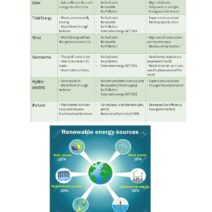Australia, known as a continent of contrasts, features an astonishingly diverse array of climates that contribute to its unique landscapes, ecosystems, and biodiversity. The geographical expanse of this island continent stretches from the arid deserts of the interior to the lush temperate rainforests along the eastern coast, making it a fascinating study in climatic variation. This article delves into the various climates found across Australia, addressing key concerns regarding travel, agriculture, and environmental sustainability.
Understanding Australia’s climates not only benefits tourists seeking the best times to visit but also informs farmers, policymakers, and environmentalists about the shifting dynamics of weather patterns and their implications on the natural world.
Exploring the Arid Interior: The Desert Climate
The vast central region of Australia is characterized by its arid to semi-arid climate. Known colloquially as the Outback, this area experiences extremely low annual rainfall, often averaging less than 250 millimeters (about 10 inches) per year. Temperatures can soar during the day, frequently exceeding 40°C (104°F) in summer, while nighttime temperatures can plummet significantly, illustrating the classic dichotomy of desert conditions.
Commonly recognized as a desert climate, the regions like the Simpson Desert or the Great Sandy Desert are marked by sand dunes, sparse vegetation, and an array of endemic wildlife uniquely adapted to such harsh environments. For travelers, understanding these climatic conditions is crucial for planning excursions; the best times to explore the Outback are during the cooler months between April and September. During these times, the weather is considerably milder, making it more conducive for outdoor activities like hiking and wildlife observation.
Coastal Splendor: The Temperate Climate
In stark contrast to the arid interior, Australia’s eastern coastline enjoys a temperate climate, providing a lush landscape ideal for agriculture and human habitation. This region experiences four distinct seasons, characterized by warm, humid summers and cool, wet winters. Cities such as Sydney and Brisbane exemplify this climate type, where average summer temperatures hover around 30°C (86°F) and winter averages are a comfortable 10°C to 15°C (50°F to 59°F).
The temperate climate supports an abundance of diverse flora and fauna, including the iconic eucalyptus trees and various species of kangaroos. Furthermore, the coastal regions benefit from oceanic influences, which help moderate temperatures and contribute to higher humidity levels. However, the climate’s subtropical characteristics can also lead to severe weather events, such as tropical cyclones and heavy rainstorms, particularly during the summer months. Thus, being aware of seasonal variations is essential for anyone planning a coastal visit or engaging in agricultural ventures.
Subtropical and Tropical Delights: The Northern Escapes
As one moves northward, the climate transitions into a subtropical and tropical regime, particularly in regions like Far North Queensland and the Northern Territory. The climates here experience wet and dry seasons, with marked differences in precipitation that significantly affect local ecosystems and agricultural practices.
The wet season, from November to April, brings monsoonal rains, leading to vibrant ecosystems and providing essential water resources to farmers and native wildlife. Temperature fluctuations are moderate, generally ranging from 25°C to 35°C (77°F to 95°F) during the day, with high humidity levels creating a tropically humid atmosphere.
However, during the dry season (May to October), conditions can be dry and hot, often leading to droughts that impact both urban and rural areas. This climatic variability presents challenges for regional agriculture, requiring adaptive strategies and sustainable practices to maintain productivity. Travelers to these areas should consider timing their visits around the dryer months for more comfortable explorations of the Great Barrier Reef or the Daintree Rainforest, where the biodiversity is rich and experiences are plentiful.
The Alpine Wonderland: The Snowy Mountains
Another less discussed climatic region of Australia is found in the Snowy Mountains of New South Wales. This alpine climate features significant snowfall during winter, particularly in the months of June through August, making it a prime destination for ski enthusiasts and nature lovers alike. Temperatures can drop below freezing, calling for specialized equipment and clothing for those venturing into these high-altitude terrains.
The unique alpine ecosystem, characterized by its endemic species of flora and fauna, faces environmental pressures stemming from climate change, such as altered snowfall patterns and increased temperatures. These factors pose critical challenges to the ecosystems that thrive in these high-altitude environments.
Conclusion: A Call to Understand and Adapt
Australia’s diverse climates are not only remarkable from a geographical perspective but also demand careful consideration regarding environmental management, agriculture, and tourism. As the continent grapples with the effects of climate change, understanding these climatic regions becomes crucial for fostering resilience in vulnerable ecosystems, safeguarding agricultural productivity, and enhancing the travel experience for visitors.
From the arid expanses of the Outback to the tropical north and the snowy peaks of the highlands, Australia remains a land of extraordinary contrast — deserving of our attention and stewardship as we navigate the complexities of an evolving climate future. By recognizing the intricacies of its weather patterns, we can better appreciate the splendor of this continent and take meaningful steps toward preserving its natural heritage for generations to come.








